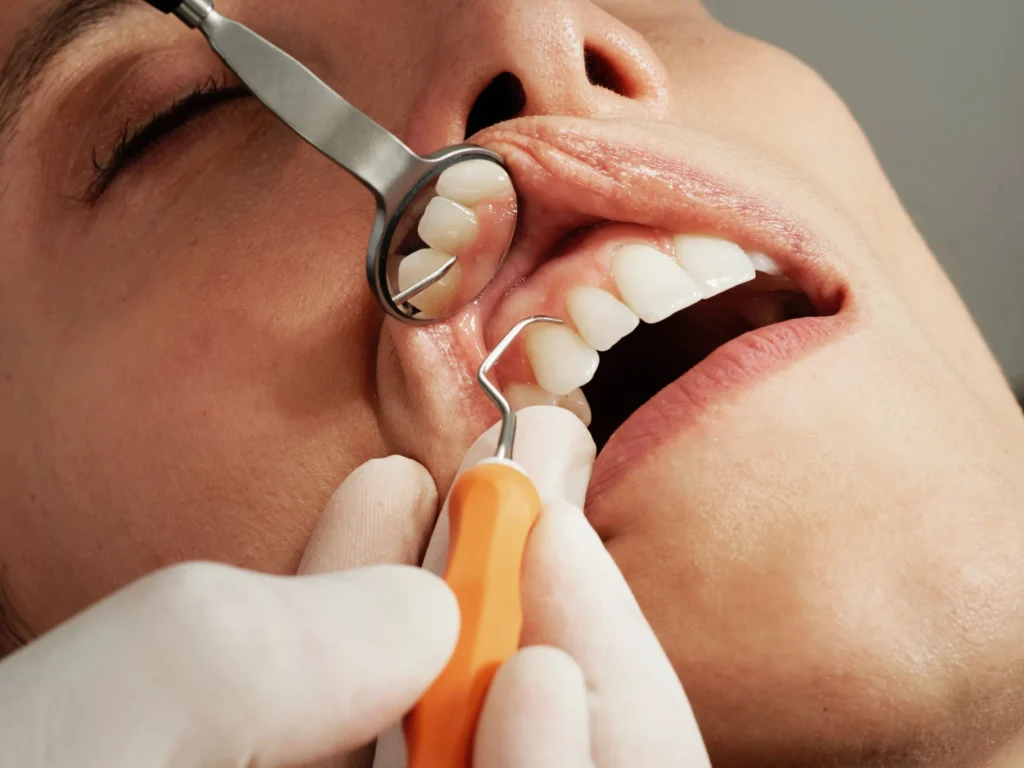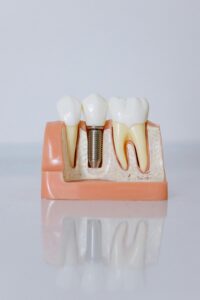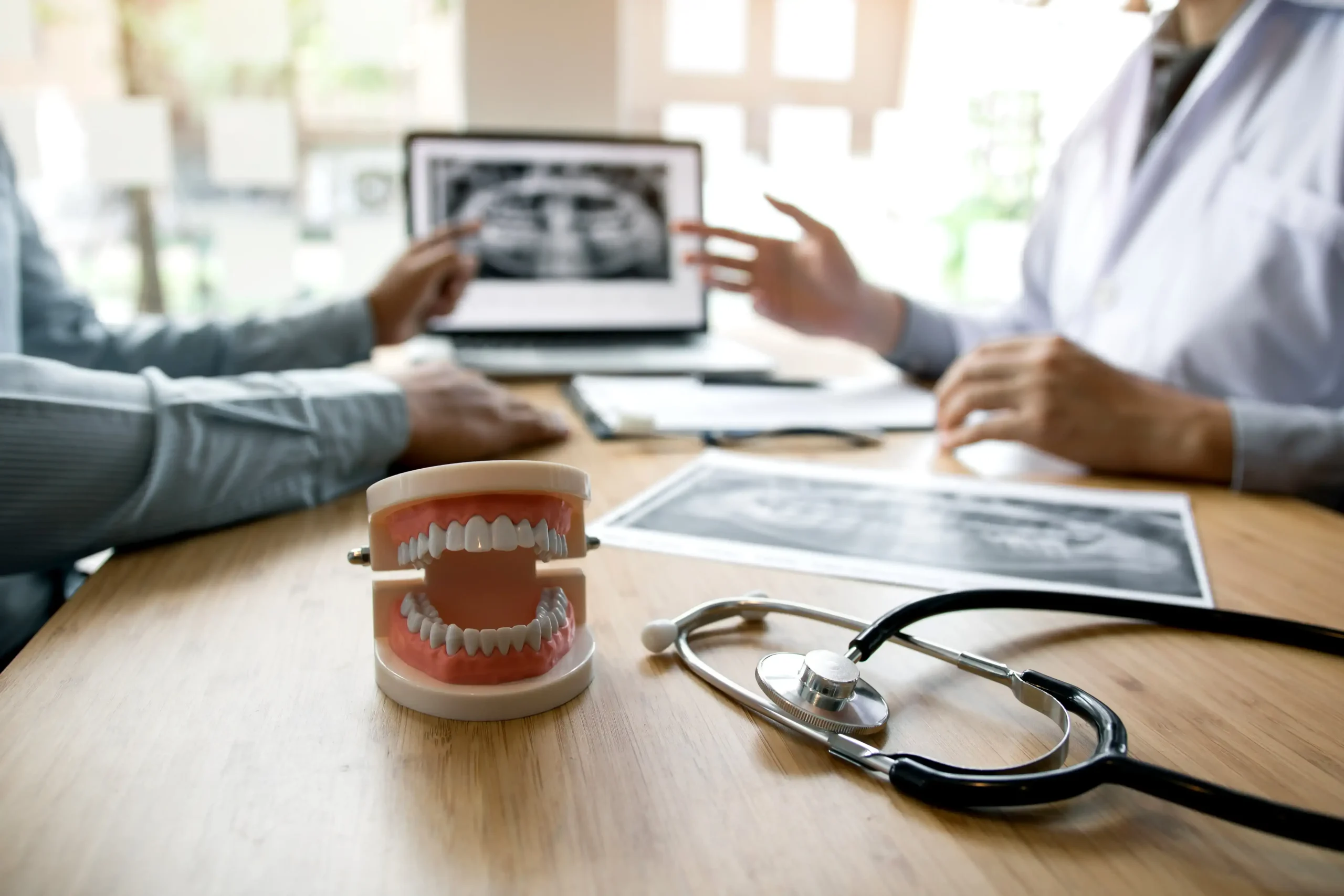Crooked teeth refer to teeth that are misaligned or do not fit together properly. They can affect appearance and oral health.
Crooked teeth are a common dental issue affecting many individuals. Misaligned teeth can lead to various problems, including difficulty in chewing, speech impediments, and a higher risk of tooth decay and gum disease. Genetics, thumb-sucking during childhood, and injuries can contribute to this condition.
Orthodontic treatments, such as braces or clear aligners, are effective for correcting crooked teeth. Regular dental check-ups and maintaining good oral hygiene are essential to prevent complications. Addressing crooked teeth improves dental health and boosts self-confidence by enhancing one’s smile.

The Impact Of Crooked Teeth
Many people have crooked teeth, and they can affect our lives in many ways. The impact of crooked teeth goes beyond just how they look. They can cause physical problems and affect our mental health. Let’s explore the physical and psychological effects of crooked teeth.
Physical Effects
Crooked teeth can lead to various physical problems. First, they make it hard to clean your teeth properly. This can cause tooth decay and gum disease.
- Tooth Decay: Food particles get stuck in the gaps, leading to cavities.
- Gum Disease: Misaligned teeth can cause your gums to become swollen and infected.
Another issue is difficulty in chewing food. Misaligned teeth don’t fit together properly. This can lead to poor digestion.
Speech problems are also common with crooked teeth. They can make it hard to pronounce certain words. This is especially true for kids learning to talk.
Below is a table summarizing the physical effects:
| Issue | Description |
| Tooth Decay | Food particles get stuck, causing cavities. |
| Gum Disease | Swollen and infected gums due to misalignment. |
| Difficulty Chewing | Teeth don’t fit together, leading to poor digestion. |
| Speech Problems | Hard to pronounce certain words. |
Psychological Effects
Crooked teeth can also impact our mental health. Many people feel self-conscious about their smile. They might avoid smiling or laughing in public.
This can lead to low self-esteem. Feeling bad about your teeth can make you feel bad about yourself. Kids might get teased at school, which can hurt their confidence.
Adults may find it hard to socialize. They might avoid social events or meeting new people. This can lead to feelings of isolation and loneliness.
Below are some common psychological effects:
- Self-Consciousness: Avoiding smiling or laughing.
- Low Self-Esteem: Feeling bad about oneself.
- Social Isolation: Avoiding social events.
- Loneliness: Feeling isolated from others.
Addressing crooked teeth can improve both physical and mental health. Seeking treatment can make a big difference in your overall well-being.
Causes Of Crooked Teeth
Crooked teeth can impact your smile and oral health. Understanding the causes of crooked teeth can help you prevent and address this issue. Below are some of the main factors that contribute to crooked teeth.
Genetics
Genetics play a significant role in the formation of crooked teeth. If your parents or grandparents had crooked teeth, you might inherit this trait. Some genetic factors that lead to crooked teeth include:
- Jaw Size: Small jaws can cause teeth to crowd and become misaligned.
- Tooth Size: Large teeth may not fit well in a small jaw, leading to crooked teeth.
- Inherited Dental Conditions: Conditions like overbite, underbite, and crossbite can be passed down through families.
Understanding your family’s dental history can help you predict and manage potential dental issues. If crooked teeth run in your family, regular dental check-ups are essential.
Poor Oral Habits
Poor oral habits during childhood can lead to crooked teeth. Habits that contribute to misaligned teeth include:
- Thumb Sucking: Prolonged thumb sucking can push teeth out of alignment.
- Tongue Thrusting: Pressing the tongue against the teeth can cause them to move.
- Using a Pacifier: Extended use of pacifiers can impact the alignment of the teeth.
- Mouth Breathing: Breathing through the mouth instead of the nose can affect the jaw’s development.
Parents should monitor and address these habits early to prevent long-term dental issues. Encouraging good oral habits can help ensure proper dental alignment.
Jaw Size And Tooth Size Discrepancy
Jaw size and tooth size discrepancies are common causes of crooked teeth. When the jaw and teeth sizes do not match, teeth can become misaligned. Factors include:
| Factor | Description |
| Small Jaw | A small jaw may not have enough space for all teeth, causing crowding. |
| Large Teeth | Large teeth may not fit properly in a small jaw, leading to misalignment. |
| Jaw Growth Discrepancies | Uneven growth of the upper and lower jaws can cause bite issues and crooked teeth. |
Regular dental visits can help identify and address these discrepancies early. Orthodontic treatments, such as braces or retainers, can correct alignment issues caused by jaw and tooth size discrepancies.
Treatment Options For Crooked Teeth
Having crooked teeth can impact your smile and oral health. There are several treatment options available to straighten crooked teeth. Each method has its benefits and suitability depending on the severity of the misalignment and individual preferences. Here, we’ll explore the most common treatment options for crooked teeth.
Orthodontic Braces
Orthodontic braces are a popular and effective solution for straightening teeth. They consist of metal brackets and wires that gradually move the teeth into the desired position. Braces can treat a variety of dental issues, including:
- Crowded teeth
- Overbites
- Underbites
- Crossbites
- Gaps between teeth
The process of getting braces:
- Initial consultation with an orthodontist
- Placement of brackets and wires
- Regular adjustments to tighten the wires
- Wearing the braces for 1-3 years, depending on the case
- Post-treatment retainers to maintain the new position
Advantages:
- Effective for severe misalignment
- Durable and long-lasting
- Customizable with colored bands
Disadvantages:
- Visible metal brackets
- Can cause discomfort
- Requires regular orthodontic visits
Clear Aligners
Clear aligners are a modern alternative to traditional braces. These are transparent, removable trays that fit snugly over your teeth. Aligners are designed to gradually shift your teeth into the desired position. Some popular brands include Invisalign and Clear Correct.
Benefits of clear aligners:
- Nearly invisible
- Removable for eating and cleaning
- Comfortable with no metal parts
The treatment process:
- Consultation with a dental professional
- 3D scanning or impressions of your teeth
- Custom aligners made based on the digital plan
- Wearing each set of aligners for about two weeks
- Regular check-ups to monitor progress
Pros:
- Discreet appearance
- No dietary restrictions
- Easier to maintain oral hygiene
Cons:
- Not suitable for severe cases
- Requires discipline to wear 20-22 hours a day
- Can be more expensive than braces
Retainers
Retainers are often used after other orthodontic treatments to maintain the position of straightened teeth. They can also be used for minor adjustments. There are two main types of retainers:
- Fixed retainers: Bonded to the back of teeth, offering a permanent solution
- Removable retainers: Can be taken out for eating and cleaning
Benefits of retainers:
- Prevents teeth from shifting back
- Can correct minor misalignments
- Custom-made for a perfect fit
Maintenance tips:
- Clean retainers regularly
- Avoid eating with removable retainers
- Regular dental check-ups
Surgery
In some cases, dental surgery may be needed to correct severe alignment issues. Surgical options include:
- Jaw surgery: Corrects misaligned jaws
- Tooth extraction: Removes overcrowded teeth
- Gum surgery: Reshapes the gum line
Advantages of surgical treatments:
- Effective for complex cases
- Can improve jaw function
- Long-term results
Considerations:
- Requires a skilled surgeon
- Higher cost compared to other treatments
- Longer recovery time
Post-surgery care:
- Follow-up visits
- Pain management
- Adherence to dietary restrictions
Prevention Tips For Crooked Teeth
Having crooked teeth can affect your smile and overall oral health. Thankfully, there are many ways to prevent this issue. Here are some prevention tips for crooked teeth to ensure a healthier and more beautiful smile.
Early Orthodontic Evaluation
Early orthodontic evaluation is crucial for preventing crooked teeth. Experts recommend that children have their first orthodontic visit by age 7. This early check-up helps identify potential issues before they become severe.
An early evaluation can:
- Detect jaw growth problems
- Spot overcrowding or spacing issues
- Identify habits that may cause misalignment
Benefits of early orthodontic intervention include:
| Benefit | Description |
| Early Treatment | Correct issues before they become severe |
| Better Outcomes | More effective and quicker treatments |
| Cost-Effective | Less expensive than later treatments |
Maintaining Good Oral Hygiene
Good oral hygiene helps in preventing crooked teeth. Keeping your mouth clean stops decay and gum disease, which can lead to teeth shifting.
Steps to maintain good oral hygiene:
- Brush your teeth twice a day
- Use fluoride toothpaste
- Floss daily to remove plaque between teeth
- Rinse with an antibacterial mouthwash
- Visit the dentist regularly for check-ups
Benefits of good oral hygiene include:
- Prevents gum disease
- Reduces the risk of tooth decay
- Maintains fresh breath
- Supports overall health
Avoiding Bad Habits
Avoiding bad habits is key to preventing crooked teeth. Some habits can negatively affect the alignment of your teeth.
Common bad habits to avoid:
- Thumb sucking
- Prolonged use of a pacifier
- Chewing on hard objects
- Nail biting
- Teeth grinding
How to break these habits:
- Offer positive reinforcement for stopping
- Provide alternative comfort methods
- Use protective mouth guards for grinding
- Consult with a dentist for additional advice
Benefits of avoiding bad habits:
- Prevents teeth misalignment
- Reduces the risk of oral injuries
- Supports healthier teeth and gums
The Role Of Orthodontists
Orthodontists play a crucial role in correcting crooked teeth. They specialize in diagnosing and treating dental misalignment issues. Their expertise ensures that patients get the best treatment for a healthier, more attractive smile.
Diagnosis Of Misalignment Issues
Orthodontists begin by examining the patient’s teeth and jaws. This helps them understand the type and severity of misalignment. The process includes:
- Visual Inspection: Orthodontists look at the alignment of teeth.
- X-rays: These images reveal underlying issues not visible to the naked eye.
- Dental Impressions: Molds of the teeth help in creating an accurate model of the patient’s mouth.
Visual inspection helps in identifying visible crookedness or gaps. X-rays show the position of teeth and roots, as well as any impacted teeth. Dental impressions provide a detailed model of the patient’s bite.
Orthodontists also use advanced technology, such as 3D imaging and digital scans. These tools offer a comprehensive view of the dental structure, aiding in precise diagnosis. Through these methods, orthodontists can pinpoint issues like:
- Overbites
- Underbites
- Crossbites
- Open bites
- Spacing issues
- Crowding
Accurate diagnosis is key to developing an effective treatment plan. It ensures that the orthodontist addresses all misalignment issues. This sets the stage for successful treatment and better dental health.
Creating Customized Treatment Plans
Once the diagnosis is complete, orthodontists create customized treatment plans. These plans are tailored to the individual’s needs. The steps include:
- Setting Goals: Defining what the treatment aims to achieve.
- Selecting Appliances: Choosing braces, aligners, or other devices.
- Timeline: Estimating how long the treatment will take.
Orthodontists consider several factors when setting goals:
- Age of the patient
- Severity of misalignment
- Patient’s oral health
They then choose the appropriate appliances. These may include:
| Type | Description |
| Braces | Metal or ceramic brackets bonded to teeth. |
| Aligners | Clear, removable trays that gradually move teeth. |
| Retainers | Used post-treatment to maintain position. |
The timeline varies based on the complexity of the case. Orthodontists provide a realistic estimate, which helps in managing expectations. Regular follow-up visits are also part of the plan. These visits allow orthodontists to monitor progress and make adjustments as needed.
By creating a personalized treatment plan, orthodontists ensure effective and efficient correction of crooked teeth. This approach maximizes the chances of achieving the desired outcome while maintaining oral health.
Implications Of Untreated Crooked Teeth
Crooked teeth are not just a cosmetic issue. Untreated crooked teeth can lead to several oral health problems. These issues can impact your daily life in various ways. Understanding these implications can help you take better care of your dental health.
Increased Risk Of Tooth Decay
Crooked teeth create hard-to-reach areas in your mouth. These areas are perfect spots for plaque buildup. Plaque is a sticky film of bacteria that can lead to tooth decay. When teeth are not aligned properly, it becomes difficult to clean them thoroughly. This increases the risk of cavities.
Here are some reasons why crooked teeth lead to tooth decay:
- Overlapping teeth trap food particles.
- Misaligned teeth make brushing and flossing less effective.
- Crowded teeth can create tight spaces where plaque can hide.
Regular dental check-ups can help monitor these areas. Dentists can use special tools to clean hard-to-reach spots. Ignoring crooked teeth can lead to more serious dental issues down the road. Snoring Prevention is always better than treatment.
Challenges In Proper Chewing
Proper chewing is essential for good digestion. Crooked teeth can make this basic function difficult. When teeth are not aligned correctly, they do not meet properly when you chew. This can lead to uneven pressure on your teeth.
Some challenges you may face include:
- Difficulty in breaking down food into smaller pieces.
- Strain on your jaw muscles due to uneven chewing.
- Increased wear and tear on certain teeth.
These challenges can result in digestive problems because food is not broken down properly. This can also lead to jaw pain and headaches. Addressing crooked teeth can improve your chewing efficiency and overall health.
Speech Impediments
Speech impediments can be another consequence of untreated crooked teeth. The alignment of your teeth plays a crucial role in how you pronounce words. Misaligned teeth can affect your tongue’s movement and airflow, leading to speech issues.
Common speech problems include:
- Lisps due to improper tongue placement.
- Difficulty pronouncing certain sounds like “s” or “th”.
- Mumbling because of lack of clarity in speech.
Speech therapy can help but addressing the root cause, which is the alignment of your teeth, is also important. Straightening your teeth can significantly improve your speech. This can boost your confidence and communication skills.
Lifestyle Changes To Improve Teeth Alignment
Crooked teeth can affect your smile and confidence. Making simple lifestyle changes can help improve teeth alignment. These changes involve dietary adjustments, proper dental care habits, and regular dental check-ups. Let’s explore how these changes can make a difference.
Dietary Adjustments
What you eat affects your teeth health. Certain foods can improve teeth alignment. Eating crunchy fruits and vegetables like apples and carrots can help. These foods clean teeth and strengthen gums.
Avoid sugary and acidic foods. These can cause tooth decay and weaken the enamel. Weak enamel can lead to misalignment.
Include calcium-rich foods in your diet. Calcium strengthens the teeth and bones. Here are some calcium-rich foods:
- Milk and dairy products
- Leafy greens like spinach
- Almonds
- Tofu
Drink plenty of water. Water keeps your mouth clean and washes away food particles.
Here’s a table of foods to eat and avoid for better teeth alignment:
| Foods to Eat | Foods to Avoid |
| Apples | Candy |
| Carrots | Soda |
| Milk | Citrus fruits |
| Spinach | Ice cream |
Proper Dental Care Habits
Maintaining good dental habits is crucial. Brush your teeth twice a day. Use a soft-bristled toothbrush to avoid damaging the gums. Floss daily to remove food particles between teeth.
Use fluoride toothpaste. Fluoride strengthens enamel and prevents decay. Rinse with mouthwash to kill bacteria and keep your mouth fresh.
Avoid using your teeth as tools. Do not open bottles or packages with your teeth. This can damage and misalign them.
Wear a mouthguard if you play sports. This protects your teeth from injury.
Here are some tips for proper dental care:
- Brush for at least 2 minutes
- Use a pea-sized amount of toothpaste
- Replace your toothbrush every 3 months
- Avoid smoking
Regular Dental Check-ups
Visiting the dentist regularly is vital. Schedule dental check-ups every six months. Dentists can spot early signs of misalignment and other issues.
Professional cleanings remove plaque that regular brushing can’t. Plaque build-up can lead to crooked teeth.
Dentists can recommend treatments. Braces, aligners, or retainers can help straighten your teeth. Early intervention is key.
Discuss any concerns with your dentist. They can give personalized advice for maintaining teeth alignment.
Here are some benefits of regular dental check-ups:
- Early detection of problems
- Professional cleaning
- Personalized advice
- Peace of mind
Remember, your dentist is your partner in maintaining a healthy smile.
Myths And Facts About Crooked Teeth
Crooked teeth are common. Many people have misconceptions about them. Understanding the myths and facts can help you make informed decisions. Here are some common myths and facts about crooked teeth.
Myth: Braces Are Only For Children
Many think braces are just for kids. This is not true. Braces work well for adults too. Adults can benefit from braces for many reasons, including:
- Improving Oral Health: Straight teeth are easier to clean. This helps prevent cavities and gum disease.
- Boosting Confidence: A straight smile can make you feel more confident. Adults often seek braces to improve their appearance.
- Fixing Bite Issues: Braces can correct bite problems. This can help with chewing and speaking.
Adults have many options for braces. Traditional metal braces are effective. Clear aligners, like Invisalign, are popular too. These aligners are almost invisible. They are a good choice for adults who want a discreet option.
Here is a comparison of braces options for adults:
| Type of Braces | Pros | Cons |
| Metal Braces | Very effective, less expensive | Visible, may cause discomfort |
| Clear Aligners | Nearly invisible, removable | More expensive, may not fix severe issues |
Adults can achieve great results with braces. It’s never too late to get the smile you want.
Fact: Crooked Teeth Can Cause Jaw Pain
Crooked teeth are not just a cosmetic issue. They can cause serious problems, including jaw pain. When teeth are misaligned, they can affect the way you bite. This can put extra stress on your jaw.
Jaw pain from crooked teeth can lead to:
- Temporomandibular Joint Disorder (TMJ): Misaligned teeth can cause TMJ. This condition affects the jaw joint. It can cause pain, clicking sounds, and headaches.
- Muscle Pain: Misaligned teeth can strain jaw muscles. This can lead to chronic pain in the jaw, neck, and shoulders.
- Difficulty Chewing: Crooked teeth can make chewing difficult. This can lead to digestive issues if food is not properly chewed.
Fixing crooked teeth can alleviate jaw pain. Orthodontic treatments can realign teeth. This can reduce stress on the jaw. It can also improve overall oral health.
Here are some benefits of fixing crooked teeth:
- Reduced jaw pain and muscle tension
- Improved bite and chewing function
- Better oral hygiene and health
Addressing crooked teeth can improve your quality of life. Proper alignment can prevent future dental issues.
Read Also,
How Comfortable Is Sedation Dentistry
Sedation Dentistry: Relaxation and Comfort during Dental Procedures
Snoring Prevention Techniques: Silent Nights Ahead
Frequently Asked Questions
What Causes Crooked Teeth?
Crooked teeth can be caused by genetics, poor oral habits, or injury. Thumb sucking and pacifier use can also contribute. Early dental intervention can help.
Can Crooked Teeth Affect My Health?
Yes, crooked teeth can lead to oral health issues. They are harder to clean, increasing the risk of cavities and gum disease. Misalignment can also cause jaw pain.
How Can I Fix Crooked Teeth?
There are several options to fix crooked teeth. Braces, clear aligners, and retainers are common treatments. Consult an orthodontist for the best option for you.
Do Crooked Teeth Worsen With Age?
Crooked teeth can worsen with age if untreated. Natural shifting occurs over time. Regular dental check-ups can help monitor and manage changes.
Conclusion
Straightening crooked teeth can boost confidence and improve oral health. Various treatment options, including braces and aligners, offer effective solutions. Consult a dental professional to find the best approach for your needs. Embrace a brighter, healthier smile by addressing crooked teeth today.
Your journey to perfect teeth starts now.




